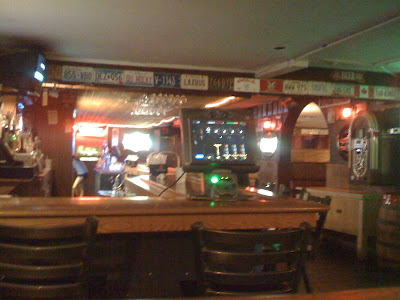

The mystery was cleared up as I realized that these were pictures of the famous Hudson River Crossing. My father worked for Consolidated Edison in New York and as near as I can figure, he spent most of his working life on the several transmission towers that cross the Hudson River for ConEd. According to a contemporary press release from Henkels & McCoy, one of the contractors on the job, "This wire crossing is the longest and heaviest crossing yet attempted in the East, demanding technical expertise and ingenuity to link Orange and Rockland utilities with Con Edison." My father may, or may not, have provided some of the ingenuity to accomplish the job. I'm not sure about that. But one thing is certain: no Con Ed employee ate more lunches at Lüchows in support of the project than my Dad. He tested, evaluated and ultimately purchased insulators, cable and other hardware for the crossings and salesmen attempted to sway his decision by plying him with the excellent German food and drink served at Lüchow's, a Manhattan legend since 1882.

Lüchow's was just two short blocks south of Irving Place where the big Con Ed building was. An easy walk for Con Ed employees and even easier when someone else was picking up the check. During the 1960's Lüchow's was owned by Jan Mitchell, a Swede who bought the place from the original owner, Herr August Lüchow. His only change to the landmark eatery was to install air conditioning. The original oil paintings, including a Van Dyke and a Goya, remained in place and the kitchen continued to serve the excellent Wienerschnitzel, Sauerbraten, pigs knuckles and Schlemmerschnitte that made the place famous. In the 1970's, Lüchow's moved uptown to the Broadway area and it closed for good in 1982, one hundred years after it's opening.
I imagine interest in heavy German food must have waned in the face of a lot of nonsense about cholesterol and so forth. Meanwhile, on the other side of the Atlantic, a quiet renaissance in traditional cuisine is taking place today. When I first lived in Germany in 1994, I asked my downstairs neighbor if he could recommend a nice German place in the area. He turned his head in thought and after a while said tentatively, "There's a good pizza place on the corner..." I asked if maybe there was a place that served German food, as opposed to Italian food prepared in Germany, but ultimately he couldn't help me. I came to find that he wasn't alone in his ignorance about his own national cuisine. German food had a bad rep in those days. It was the butt of insider jokes at parties. People under 30 were surprised to learn it even existed.
On my most recent trip, that situation had changed. At homes where in the early 90's the talk was only of the finest olive oil, roasted egg plant and sun dried tomatoes, suddenly I was being served Rouladen and Schweinebraten. These were foods that for many years, people associated with the Nazi past and they were avoided. Now, it turns out, German food is good, and you don't have to be a Fascist to appreciate it. Social Democrats, Greens, members of the of the Christian Union; they can all sit down to a plate of Salzkartoffeln mit Spargel und Schinken and enjoy it.
Lüchow's is gone, an NYU dormitory stands on the site at 112 East 14th Street. As far as I know, the only place you can buy German food in America is Wienerwald, a fast food joint where the food isn't necessarily authentic. I'm glad I got to eat in Lüchow's in the old days and I'm looking forward to learning more about the secrets of Knödel next time I'm back in Germany. Until then, I'll focus on the roasted egg plant and have to be satisfied with an occasional German pilsner from our state liquor store.






_Bauhaus_Berlin.JPG)
























